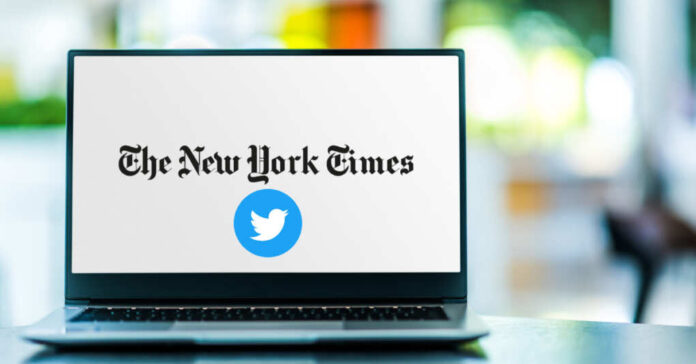
For some, verification is everything. You know, being told you are popular, well-received, and deserve attention. And for The New York Times, that has all been stripped away.
Thanks to a recent move by Twitter, The Times, along with several other once “verified” accounts, have just had their reach severely limited by eliminating the coveted blue checkmark.
If you know much about Twitter, having such a checkmark means that you are indeed pretty popular, and as such, a “verification” of your account is necessary to ensure that it is the real deal and not someone just posing as you to get a few minutes in the limelight.
Basically, it’s a sign that you’ve “made it” or achieved a certain status in life. For the “paper of record” and so many others, it also means that they have a greater pool of influence.
Unfortunately for The Times, they are no longer privy to such benefits.
As of Saturday, the blue checkmark has been missing from the paper’s account in what The Times itself is calling “Twitter’s Blue Check Apocalypse.”
According to a Friday piece, the paper put out Twitter is retracting these checks from accounts that refuse to pay Twitter owner Elon Musk’s price for such.
But the price for not paying might be too much, even for an organization as well known as The New York Times.
Why?
Well, as Musk points out, it’s just another sign that the Times is no longer the once well-respected and truth-seeking establishment that it used to be.
Known for ages as the “newspaper of record,” The Times has been one of the best-performing papers in the free world for decades now. People once flocked to it and its newspaper stands, knowing they would find “All the news that’s fit to print,” just as its motto states.
But the paper seems to have fallen off the rails a bit in recent years.
In fact, as one former Times journalist himself noted, it took its greatest leap towards abandoning true journalism back in 2016 when Donald Trump was running for president.
Jim Rutenberg noted that thanks to Trump’s unorthodox candidacy, reporters everywhere would soon begin to “throw out the textbook American journalism has been using for the better part of the past half-century.” Rutenberg wrote that it would be a shame and “untenable” even for establishments to begin to measure truth, justice, and themselves compared to one presidential campaign, no matter who that was.
As he said, “It’s journalism’s job to be true to the readers and viewers, and true to the facts, in a way that will stand up to history’s judgment.”
And just as Rutenberg predicted, that’s exactly what happened. The Times quickly jumped on the bandwagon, using their sources to do nothing more than point fingers at Trump and anything he may support. Clearly, it hasn’t stopped since.
When you pick up The Times now, you are sure to find only one side of the aisle being represented and only one viewpoint. And as many have pointed out, even that isn’t clear or well-articulated anymore.
Putting salt on the fresh lack of a checkmark wound, Elon Musk tweeted, “The real tragedy of @NYTimes is that their propaganda isn’t even interesting.”
And quite a few others on social media agreed, noting that it was all too predictable. And not at all factual. You can take almost any event, learn the facts, watch it happen in real-time, and then go to The Times and find a completely different storyline.
Besides, as Musk later insinuated, it doesn’t even have the Twitter following he himself does. (Musk has nearly triple the amount of followers). Perhaps they would have more “real followers” if they simply posted the news or their top stories.
But they don’t.
As Musk said, their feed is the “Twitter equivalent of diarrhea. It’s unreadable.”
And so, with stories that can’t be verified, the paper itself isn’t verified, either.











